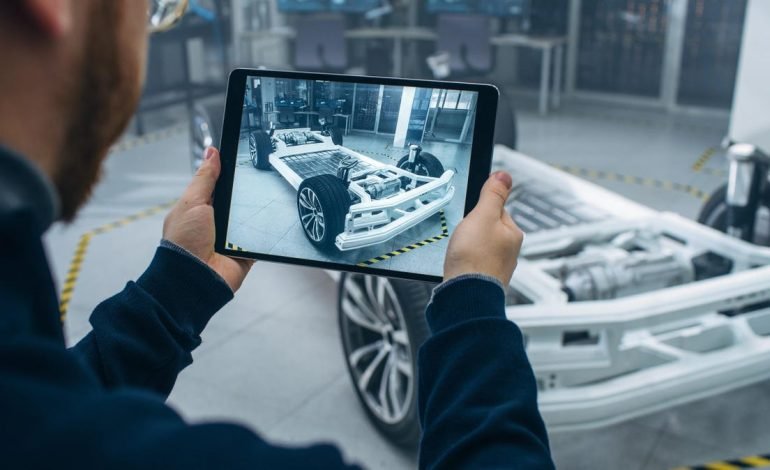Google Goggles What This Means For Augmented Reality
Excellent overview of Google Goggles :
Now the dust and the wow factor has settled from the Google Goggles announcement a few days back. I thought it would be interesting to take a more in-depth look at what this means to the augmented reality industry.
Multi-Search Topics :
There are demos and plenty of taking photos of book covers to retrieve reviews and online prices. If you are new to augmented reality then it’s actually not that new. SnapTell has both an iPhone and Android application that provides this functionality.
Just take a picture of the cover of a DVD, CD, Book, or Video Game, and the software uploads the image to the SnapTell server and runs image recognition to compare the picture against likely matches. Once a match is found you get the usual mix of online reviews and cheaper prices.
Recognizing a barcode image I would assume is a lot less complex than recognizing a book cover since there are fewer colors and shapes to contend with.

Barcode shopping is another feature of Google Goggles and again there are various products available that provide the same functionality, ShopSavvy on the Android or RedLaser on the iPhone are just a few examples.
I use RedLaser from time to time to see just how obscure the product range is. GoCat Tuna and Herring cat crunchies are the most obscure product I have managed to have recognized so far. To compete with Google’s logo recognition there’s GetFugu for the Android, iPhone, and the Blackberry so again nothing new there.
Goggles will search on wine bottle logos which as far as I know are unique as I don’t know any other application that does that today, but I’m sure it’s only a small leap from recognizing a book cover to recognizing a wine label.
You might think that I’m having a dig at Google but far from it, just because they do not first do not make the application any less cool. There are some really fantastic features in Google Goggles that make me drool.
I’m no art buff but Goggles will enable me to become an art critic and give me relevant information about major pieces of art, all I need to do is sneak a crafty picture when the security guard isn’t looking and Goggles will tell me the name of the picture and the artist.
Fantastic if you are walking around a museum but again it’s probably not a huge step in recognizing the Mona Lisa or a paperback copy of C++ for dummies, ultimately it’s a blob of shapes and colors that are compared. Nevertheless, it is a fantastic use of image recognition.

My personal favorite and the piece de resistance of Google Goggles is a feature that must have the CEOs of the various augmented reality browser companies laying awake at night as Google is about to change the way location-aware augmented reality browsers work.
The way augmented reality browsers work today is they use LBS to figure out your current location and the compass to see which way you are facing. With that information, they can determine what points of interest you might be facing.
Most of the time it works pretty well but I’m sure you know that GPS is not accurate, sometimes my tests have been accurate to 30 meters and sometimes it strays up to a mile.
If you are facing a landmark the visual indicator provided by the augmented reality browser may or may not be shown nearby the object you are looking to locate.
The second problem is there could be a building between you and the point of interest; the application has no way of actually knowing what is in front of you and what you are really looking at.
Google Goggles Image recognition :
Google Goggles however uses image recognition on the landmark. If you are standing at Big Ben in London it sends a copy of the image to the database, performs an image match, and then tells you precisely what you are looking at, not what might be around you and in that general direction.

The accuracy is so good you can sit at home in California and look at your holiday snaps of Big Ben and it will still recognize the landmark. Fantastic when you get back from a trip and wonder just what all those photos are actually of.
Google Developers API :
Google’s strength is obviously searching and the vast array of seemingly endless images that have that at their disposal. Properly indexed there would seem to be no limit to what can recognize, particularly if they open up the API for developers to produce their own plug-ins.
What breed of cat is that? The Cat recognition plug-in tells me it is a British Shorthair and its favorite food is fish. That’s a nice car.

What is it? The car recognition plug-in tells me it’s an Aston Martin DB7, the insurance group is a 31 and it has a top speed of 186mph, but I can’t afford it because my bank plug-in is warning me based on my current salary I would have to save for 30 years.
You can’t help thinking that terminator vision has just got a step closer. Some six or seven months ago we got our first augmented reality browser, now at the end of the year, it seems like we are about to take a huge step forward in augmented reality with Google’s arrival.
It will be interesting to see how the current crop of augmented reality browser providers respond to Google play and what is up to their sleeve for the future.
The video walk-through below is well worth a look at some of the features of Google Goggles.





